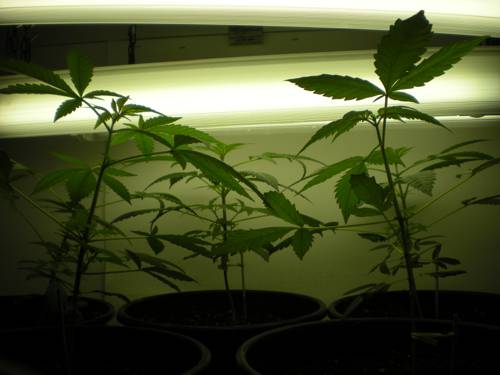
FAQ About Indoor Plant Light-Mapping Techniques

What is light mapping for indoor plants?
Light mapping for indoor plants involves assessing and plotting the levels of light available in different areas of your home. This process can help identify the best spots for placing indoor plants with varying light requirements, ensuring they receive the optimal amount of light for healthy growth.

Why is light mapping important for growing indoor plants?
Light mapping is crucial because indoor plants have different light needs. Mapping helps ensure that each plant receives the right intensity and duration of light to thrive, preventing issues such as leggy growth, poor blooming, or leaf drop due to inadequate or excessive lighting.

What tools are needed for indoor plant light mapping?
For indoor plant light mapping, you can use light meters, which measure the intensity of light in a given space. Smartphone apps that use the device's camera sensor can also estimate light levels. Additionally, you might use a notepad or digital tool to record and map the results.

How do light levels affect indoor plants?
Light levels have a direct impact on the photosynthesis process in plants. Insufficient light can result in poor growth and development, while too much light can cause leaf burn or stress. Proper light levels ensure plants can process energy efficiently, enhancing their growth and health.

Can you use a smartphone to map light levels for indoor plants?
Yes, you can use a smartphone to map light levels for indoor plants. There are apps available for both Android and iOS platforms that utilize the phone's camera sensor to measure and record light intensity, providing an accessible and convenient method for light mapping.

How often should you map light levels in your home for indoor plants?
It's advisable to map light levels in your home seasonally or whenever there are changes in the environment, such as moving furniture or adding new window treatments. This ensures that plants are continuously receiving the appropriate light for their needs.

What is the difference between direct and indirect light for plants?
Direct light refers to sunlight that shines directly on a plant without obstructions, while indirect light is sunlight that is filtered through a medium like curtains or that which reflects off walls and ceilings. Different plants have preferences for either direct, indirect, or even low light conditions.

How can you adjust light levels for indoor plants if a spot is too dark?
If a spot is too dark, consider moving the plant closer to a window or using supplemental grow lights. LED and fluorescent grow lights can be adjusted to provide different light intensities to suit the plant's needs. Ensure the light is at a safe distance to prevent overheating or burning.

Are there plants that thrive in low light conditions?
Yes, several indoor plants thrive in low light conditions, including snake plants (Sansevieria), peace lilies (Spathiphyllum), and pothos (Epipremnum aureum). These plants have adapted to grow in environments with minimal natural light.

What is a light meter and how is it used for indoor plants?
A light meter measures the intensity of light in a specific area. For indoor plants, it is used to find optimal placement by detecting how much visible light hits a particular spot, thus helping to ensure that plants receive adequate lighting for photosynthesis.

How can seasonal changes affect light levels for indoor plants?
Seasonal changes can significantly affect light levels, as the angle of the sun and the length of day vary throughout the year. Winter months may result in reduced light intensity and duration, requiring adjustments like moving plants closer to windows or using artificial lighting.

What role do windows play in indoor plant light mapping?
Windows are crucial in indoor plant light mapping as they are the primary source of natural light. Their size, orientation, and any obstructions (like awnings or trees) affect the light entering a room, impacting where you'd best place different types of plants.

How can you ensure even light distribution in a room for plant growth?
Use light reflectors to bounce light around the room or rearrange furniture and plants to maximize exposure. Installing multiple light sources and ensuring they cover different angles can also help achieve even light distribution.

Can artificial lights mimic natural sunlight for indoor plants?
Yes, artificial lights, such as LED grow lights, can effectively mimic natural sunlight by providing a full spectrum of light wavelengths essential for plant health and growth. These lights can be timed and adjusted for intensity to match specific plant requirements.

What is the ideal light intensity for most indoor plants?
The ideal light intensity varies among plant species; however, many common indoor plants thrive with light levels between 1000 to 5000 lux. It's crucial to research the specific needs of each plant species to determine the exact light requirements.

Do north-facing rooms provide enough light for most indoor plants?
North-facing rooms typically receive indirect and lower light levels, which may not be sufficient for plants needing full sunlight but can be adequate for shade-tolerant species. Supplementing with grow lights can help if higher light levels are necessary.

What are some signs that an indoor plant is not getting enough light?
Signs of insufficient light include leggy stems, smaller leaves, pale foliage, and no flowering despite good health otherwise. If you notice these signs, consider adjusting the plant's location or provide artificial light to improve conditions.

How do you prevent light burn in indoor plants?
To prevent light burn, ensure that plants are not placed too close to intense light sources like windows with direct sunlight or grow lights. Gradually introduce plants to brighter conditions and monitor for signs of stress, such as yellowing or brown leaf edges.

Can moving plants too often affect their growth due to changing light levels?
Yes, frequently moving plants can cause stress due to abrupt changes in light levels, which can affect their growth and health. It’s best to find a suitable spot that meets their light requirements and make only necessary adjustments gradually.
